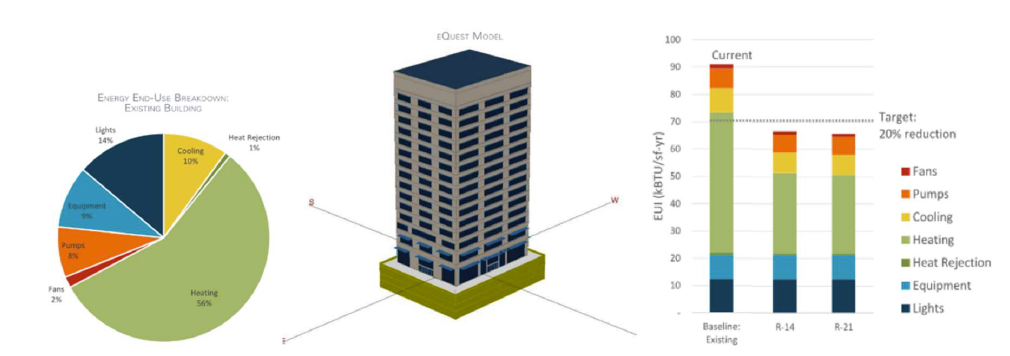Ken Maschke, Daniele Vezzoli and Katarzyna Burzynska
Ken Maschke, Vice President, Thornton Tomasetti Canada, 301-116 Spadina Ave., Toronto, ON, Canada, KMaschke@ThorntonTomasetti.com
Daniele Vezzoli, Architect, Zeidler Architecture, 158 Sterling Rd 6th Floor, Toronto, ON M6R 2B7, Canada, dvezzoli@zeidler.com
Katarzyna Burzynska, Senior Designer, Thornton Tomasetti, 120 Broadway, New York, NY, USA, kburzynska@thorntontomasetti.com
ABSTRACT
Studies of residential buildings in Toronto show poor energy use intensity in buildings constructed in the 1960s. This is often due to the obsolete heating and cooling systems, deteriorated condition of window assemblies, and poorly insulated building envelopes. To compete for environmentally aware tenants and profit from market rate rents, building owners face the challenge of meeting contemporary performance needs. Conscientious owners and institutions want to improve thermal comfort and meet the city’s plan of 65% carbon footprint reduction by 2030 vs. the 1990 data. Similar to other countries with booming post-war populations, the dynamic development of residential buildings in the 1960s and 1970s in Canada was focused on low and middle-income housing. Designers of many of these complexes attempted to follow Le Corbusier’s Five Points of Architecture, but were required to work within economic restraints. Since a vast majority of midcentury modern buildings are not designated historic landmarks, maintaining their authenticity is not enforced through the Ontario Heritage Act. In the efforts to increase their performance, architects often turn to methods that will upgrade the building envelope, wrapping it in a “second skin” of over-cladding, as a middle ground between preservation, aesthetics, and cost efficiency. Designs featuring a second skin range from simple sheet metal over-cladding to intricate glazed rainscreen systems. The paper will describe challenges faced in over-cladding design in modern residential buildings in Toronto. A range of options of detailing and lessons learned will be discussed through a review of the design process on case studies of modern buildings, where different types of over-cladding were used to improve the performance of the building envelope.
KEYWORDS: overcladding, modernism, residential, Toronto, low-income



